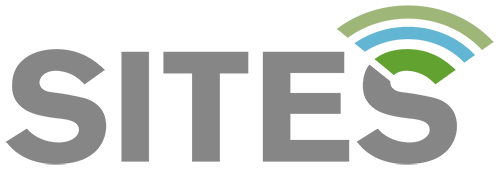Abisko Scientific Research Station

Address
Abisko Scientific Research Station
Vetenskapens Väg 38
SE 981 07 Abisko
Sweden
Station manager
Margareta JohansosnStation Features
Opening year: 1913 Status: OpenFacilities
Station name and owner
The Abisko Scientific Research Station is run by the Swedish Polar Research Secretariat.
Location
The station is located about 200 km north of the Arctic Circle and approximately 380 m.a.s.l., on the south shore of Lake Torneträsk. The station is situated in a 46 hectare nature reserve bordering the Abisko National Park, which covers 75 km2. The station is located in mountain birch forest and surrounded my mountains. The village of Abisko (year-round population approx. 150 people) is located nearby. The surrounding area offers a great variety in topography, geomorphology, geology, and climate, as well as flora and fauna. The highest mountain in the area reaches 1991 m.a.s.l.
Climate data
Grey colours are WMO Climate Normals including maximum and minimum values. Blue colours are individual years.
Climate data for the stations where extracted via Copernicus Climate Data Store, from the global gridded reanalysis product:
ERA5 monthly averaged data on single levels from 1940 to present.
Description and source code: Roemer J.K. 2023. https://doi.org/10.5281/zenodo.10214922
Data Source: Hersbach et al. 2023. Copernicus Climate Change Service (C3S) Climate Data Store (CDS), https://doi.org/10.24381/cds.f17050d7
Biodiversity and natural environment
The average annual air temperature is approximately 0°C. Annual precipitation along Lake Torneträsk varies greatly over an west-east gradient with 1000 mm in the west to 300 mm in the east. Mean annual air temperature and growing season length have exhibited an increasing trend over the last decades. Vegetation composition is varied, ranging from simple plant communities following retreating glaciers to complex mountain birch forest, heath and meadow tundra ecosystems. About 40% of the surrounding landscape is above the tree line. Ecosystems comprise mountain birch forest, lakes, rivers, streams, mires, wetlands, tundra heath, alpine meadow, high alpine environment, rocky outcrops, and glaciers. The area is underlain by sporadic permafrost, which is located primarily in mire areas. Fauna includes birds, fish, reindeer, moose, snowshoe hare, rodents, red fox, mink, otter, brown bear, wolverine, lynx, aquatic and terrestrial insects. The area is sparsely populated and land use is minimal, dominated by reindeer husbandry, hunting, fishing, tourism, and research.
History and facilities
The Abisko Scientific Research Station was established in 1913. The station can accommodate approx. 75 visitors. Accommodation is available in shared rooms in the main building (2-3 person rooms) and dorm style accommodation in separate buildings (2-4 person rooms). Fully equipped kitchens are available for visitors to prepare their own meals according to a self-catering principle. The station offers laboratory facilities, workshops, storage space (short-term storage only), a library, office space, a lecture theatre, classroom facilities, meeting rooms and logistical support. The village of Abisko is located within a 15-minute walk from the research station, where you will find a well-equipped grocery store, gas station, and train station. Postal service is available at the research station and local grocery store. During tourist seasons (winter and summer), restaurants are available at tourist facilities. Abisko Scientific Research Station also offers access to four off-grid, remote field huts in the surrounding area: two locations west of the station (Latnjajaure (alpine) and Kärkevagge (glacial stream valley)) and two locations on the north shore of Lake Torneträsk (Jieprenkiedde and Lullehatjårro).
General research and databases
Research focuses on natural sciences, including e.g. ecology, biogeochemistry, geomorphology, meteorology, hydrology, and climate science. Ecological studies investigate the dynamics of plant community change, biogeochemical patterns, understanding ecosystem structure and function, and predicting ecosystem responses to climate and environmental change. Ecological studies span a wide range of research fields including plant ecology, botany, biogeochemistry, soil biology, entomology, ornithology, wildlife biology, fish biology, terrestrial and aquatic sciences. Meteorological projects investigate weather patterns, climate change and variations in microclimate. Geomorphological research focuses on permafrost thaw, mass-wasting, sediment transport, glacial retreat. The research station contributes to a research database including an up-to-date bibliography of publications stemming from research in Abisko. The Abisko Scientific Research Station also runs a long-term environmental monitoring programme, dating back to 1913. Included in this programme are a number of meteorological and environmental parameters as well as phenological observations. Furthermore, Abisko Scientitic Research Station is a partner in the long-term monitoring programmes of Swedish Infrastructure for Ecosystem Science (SITES) and Integrated Carbon Observation System (ICOS). All data collected via the monitoring programmes are publicly available.
Link to data: https://dataportal.eu-interact.org/stations
Station Monitoring
Human dimension
The village of Abisko is located approximately 1 km east of the research station. Year-round population is approx. 150 people. The village offers a grocery store, gas station, elementary school (kindergarten to grade 9), and day care. A community interest group organises a series of annual events and activities. Main occupations include tourism, transport, education and research. A number of tourist facilities provide a basis for both summer and winter tourism. The village of Abisko and the Abisko Scientific Research Station are located on the traditional territory of Sápmi, and local Sámi communities use the area for traditional reindeer herding and husbandry.
Access
The Abisko Scientific Research Station is easily accessible by train, car, bus, and airplane. Two passenger trains pass through Abisko per day, from Stockholm, Sweden, and from Narvik, Norway. A road connects Kiruna, Sweden (~90 km), and Narvik, Norway (~75 km). Airports in Kiruna, Sweden (~100 km) and Evenes, Norway (~120 km) offer daily flights to Stockholm and Oslo, respectively. During the summer season, there is also a bus from Kiruna airport to Abisko.



